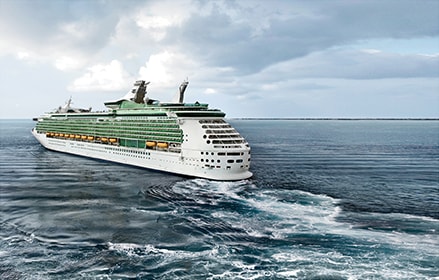LOOKING CLOSER
Cold corrosion eliminated. Marine engine performance optimized.
Wärtsilä RT Flex 82-T
Mobilgard™ 5100 cylinder oil, in combination with the Mobil℠ Cylinder Condition Monitoring service, drove major efficiencies by controlling cold corrosion, helping improve engine performance and cutting cylinder oil feed rates.
Situation
With market conditions continuing to challenge marine operators, the discovery of severe cold corrosion in the Wärtsilä RT Flex 82-T engine of a container vessel was a major concern. Despite using a 70 BN cylinder oil at an elevated feed rate of 1.3g/kWh, low residual BN levels had resulted in peeling of the chrome coating on the piston rings. This was causing costly, detrimental cylinder liner wear and scuffing. The vessel, which was operating at between 20 and 60 per cent of maximum continuous rating, was running heavy fuel oil with an average sulphur content of between 2.3 and 3.4 per cent.
Recommendation
Onboard trials were conducted by ExxonMobil engineers who implemented the Mobil℠ Cylinder Condition Monitoring service, a proactive tool for the management of slow-speed cylinder lubrication. When used in conjunction with MobilGard™ cylinder oils, Mobil℠ Cylinder Condition Monitoring can help marine operators optimize lubricant feed rates.
A switch to Mobilgard 5100, a 100 BN cylinder oil, was recommended. The cylinder oil is proven to provide protection to slow-speed, two-stroke marine engines running on high-sulphur fuel.
Impact
The change to Mobilgard 5100 cylinder oil helped improve engine performance, increase vessel reliability, and ultimately reduce running and repair costs. Switching to the 100 BN lubricant mitigated cold corrosion and contributed to excellent engine cleanliness. It also resulted in a valuable savings in cylinder oil consumption – the feed rate was reduced by 34 per cent compared to previous performance. Piston rings and piston ring top lands showed significantly reduced deposits, while low iron levels in scrape down samples indicated minimal cylinder liner wear. As a result, maintenance expenditure was cut, and the time between engine overhauls was extended.
Based on the experience of a single customer. Actual results can vary depending upon the type of equipment used and its maintenance, operating conditions and environment, and any prior lubricant used.


